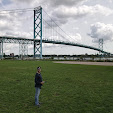In a typical winter season, the city of Binghamton, NY (located at the confluence of Interstates 81, 86, and 88 in New York State's Southern Tier region) receives around 60 inches of snowfall on average and is among the "Snow Capitals" of the state. It is not the “flagship” location for big snowfall in New York (see places such as Buffalo, Oswego, and Watertown), but this part of the state is no stranger to large-scale snowstorms, thanks to both Lake Effect and Nor’easter-type storm systems. During the Nor’easter of December 16-17, 2020, Binghamton and its surrounding communities recorded well in excess of three feet of snow within a 48-hour period, setting an all-time record for a two-day snowfall total. The locals immediately began cleverly calling this storm the “SNOWVID Emergency” and its immediate impact was to effectively paralyze travel across the region, both on the local street grid and on the major freeways of the area. Snow removal crews descended upon the region in the days after the storm – crews from New York State DOT responded in full force, as did an auxiliary set of crews offered to the area by the New York State Thruway Authority. Crews worked around the clock for days to make the streets and highways of the area passable again in an effort to reopen the city in time for the final days of the Christmas shopping season.
In the aftermath of this storm, I decided to make the 2+ hour journey up Route 17 to check out the big snowfall for myself. Having attended the University at Buffalo’s School of Engineering & Applied Sciences, I am no stranger to witnessing enormous snowfalls in New York’s “Snow Belt”, but it had been several years since I had seen one quite this big. I was very impressed with the progress that had been made in the snow removal category by the date of my visit (Saturday, 12/19). In general, shoulder lanes and auxiliary travel lanes were not always completely clear, and areas along on/off ramps were problematic due to lack of snow-clearing and overall lack of visibility due to the tall mounds of snow working to block typical sight lines at interchanges. However, considering that these scenes were captured about 48 hours after the storm’s conclusion, the major roads and streets across the area were in fairly good shape and generally open to traffic. It was great to see folks out and about doing their part to get things open again – this is the kind of event that folks around this corner of the world are typically better prepared for than most.
What
follows is a pictorial guide to the “Triple Cities” area of the Southern Tier (referring to the area around neighboring Binghamton, Johnson City, and Endicott) as we take a look at the impressive aftermath of one of the area’s biggest snowfall
events in recorded history. The story of this storm will be told by residents and travelers of this area for many years to come.













































Comments